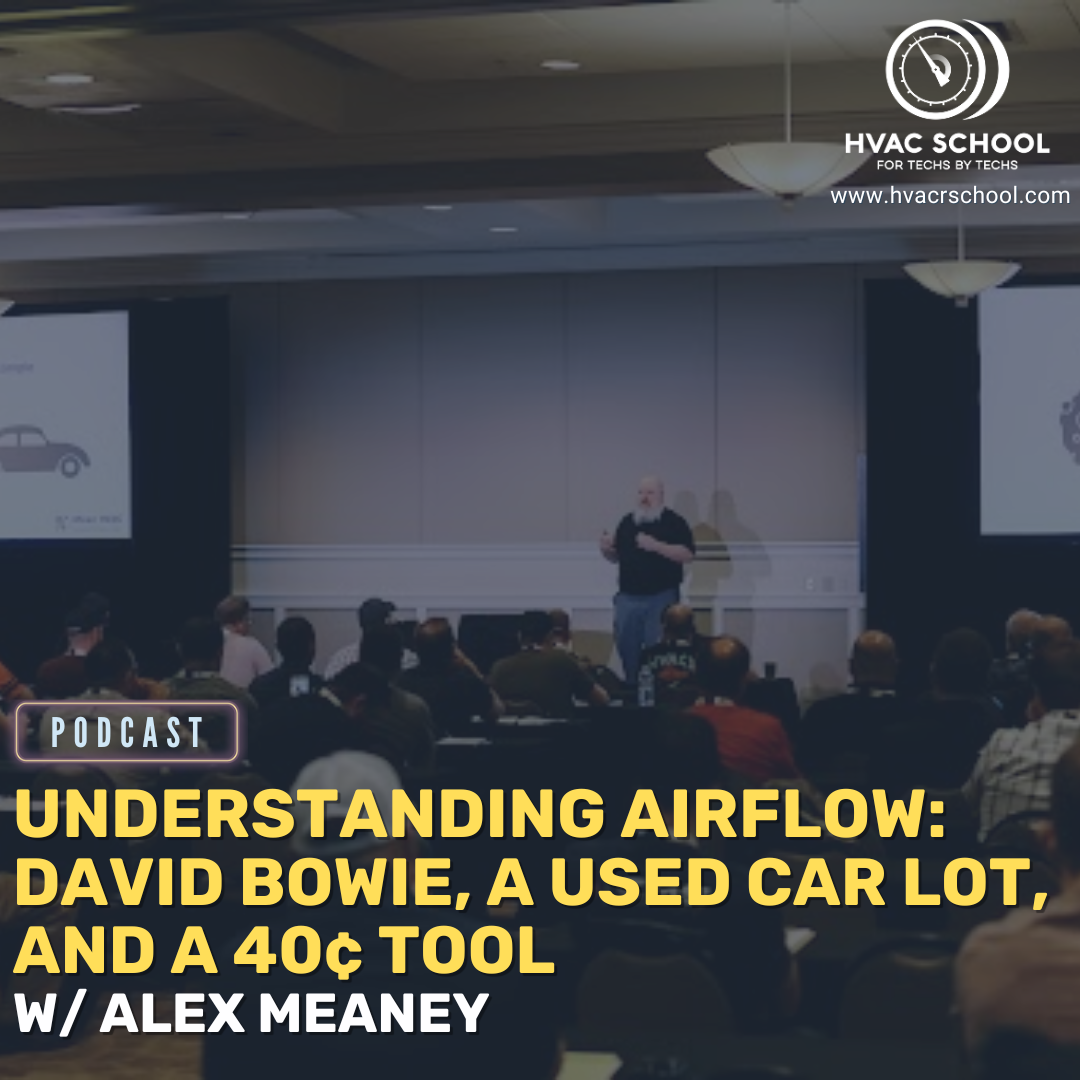Understanding Airflow: David Bowie, a Used Car Lot, and a 40¢ Tool

In this enlightening presentation, Alex Meaney breaks down the fundamental concepts of airflow in HVAC systems using practical analogies and real-world examples. Rather than diving straight into complex mathematics, Alex focuses on helping technicians and contractors understand what's actually happening inside ductwork and why traditional design methods may be falling short in modern residential systems.
Alex begins by addressing one of the most critical yet misunderstood aspects of ductwork: the exponential relationship between duct size and airflow capacity. He explains that the difference between a 6-inch and 7-inch duct isn't just 17% more capacity—it's actually 36% more, because airflow is determined by cross-sectional area (which increases geometrically) rather than linear measurements. This fundamental misunderstanding leads to significant underperformance in many HVAC installations.
The presentation tackles the confusion surrounding pressure terminology in the HVAC industry, where the single word “pressure” is used to describe four distinct concepts: static pressure, velocity pressure, pressure loss, and external static pressure. Alex uses creative analogies, including a memorable demonstration with an inflatable tube dancer (referencing the “used car lot” in his title), to illustrate how static pressure and velocity pressure are always in balance—when one increases, the other decreases proportionally.
A major focus of the discussion centers on why the traditional 0.1 inches of water column per 100 feet friction rate, long considered standard in residential duct design, is no longer adequate for modern systems. Alex explains that today's homes have evolved significantly: they're larger, use more restrictive filters for air quality, have more complex coil designs, and often place equipment in suboptimal locations. These factors combine to create much higher system resistance than the 0.1 standard was designed to handle. He advocates for using lower friction rates (like 0.06) and emphasizes that proper duct sizing is more critical than ever.
The presentation concludes with practical insights about system design philosophy, emphasizing that while homeowners may not complain about poorly performing systems, HVAC professionals should use objective measurement tools rather than customer satisfaction as the primary indicator of system performance. Alex stresses that craftsmen in the field will make systems work regardless of design flaws, but this shouldn't excuse poor initial design practices.
Key Topics Covered
- Duct Sizing Fundamentals
- The geometric relationship between duct diameter and airflow capacity
- Why linear measurements can be misleading when calculating system performance
- The critical importance of proper duct sizing in modern installations
- Pressure Concepts Demystified
- Static pressure vs. velocity pressure and their inverse relationship
- How pressure and friction work together in ductwork systems
- External static pressure as a measure of fan capability
- The role of pressure in airflow generation and control
- Friction and Resistance in Ductwork
- Understanding friction as the primary enemy of airflow
- How fittings create equivalent lengths of straight duct
- The impact of direction changes and system components on airflow
- Comparing flex duct vs. metal duct friction characteristics
- Modern System Design Challenges
- Why traditional 0.1 friction rates no longer work effectively
- The evolution of residential systems: larger homes, better filters, complex coils
- Equipment placement strategies and their impact on system performance
- The “war on sensible” and “war on blowers” affecting modern HVAC design
- Measurement and Verification Methods
- Tools for measuring static pressure and velocity pressure
- The importance of using objective measurement tools over customer satisfaction
- Available static pressure calculations and their practical applications
- Manual D design principles and their real-world limitations
- Practical Design Philosophy
- Working backwards from blower capacity rather than arbitrary friction rates
- Balancing system performance with budget constraints
- The importance of central equipment placement for optimal airflow
- Professional standards vs. “good enough” mentality in system design
Have a question that you want us to answer on the podcast? Submit your questions at https://www.speakpipe.com/hvacschool.
Purchase your tickets or learn more about the 7th Annual HVACR Training Symposium at https://hvacrschool.com/symposium.
Subscribe to our podcast on your iPhone or Android.
Subscribe to our YouTube channel.
Check out our handy calculators here or on the HVAC School Mobile App for Apple and Android
Author:









Comments
To leave a comment, you need to log in.
Log In